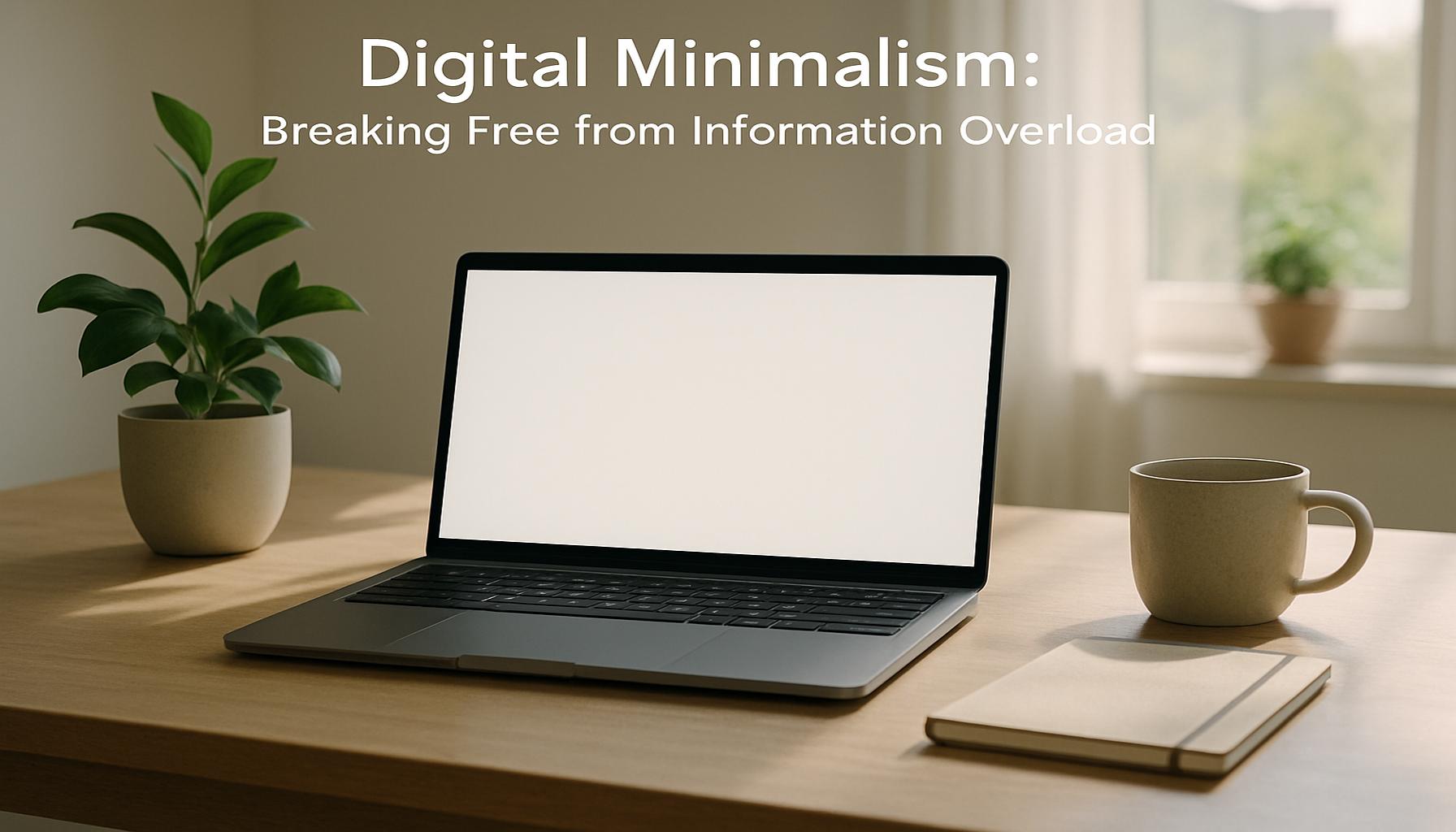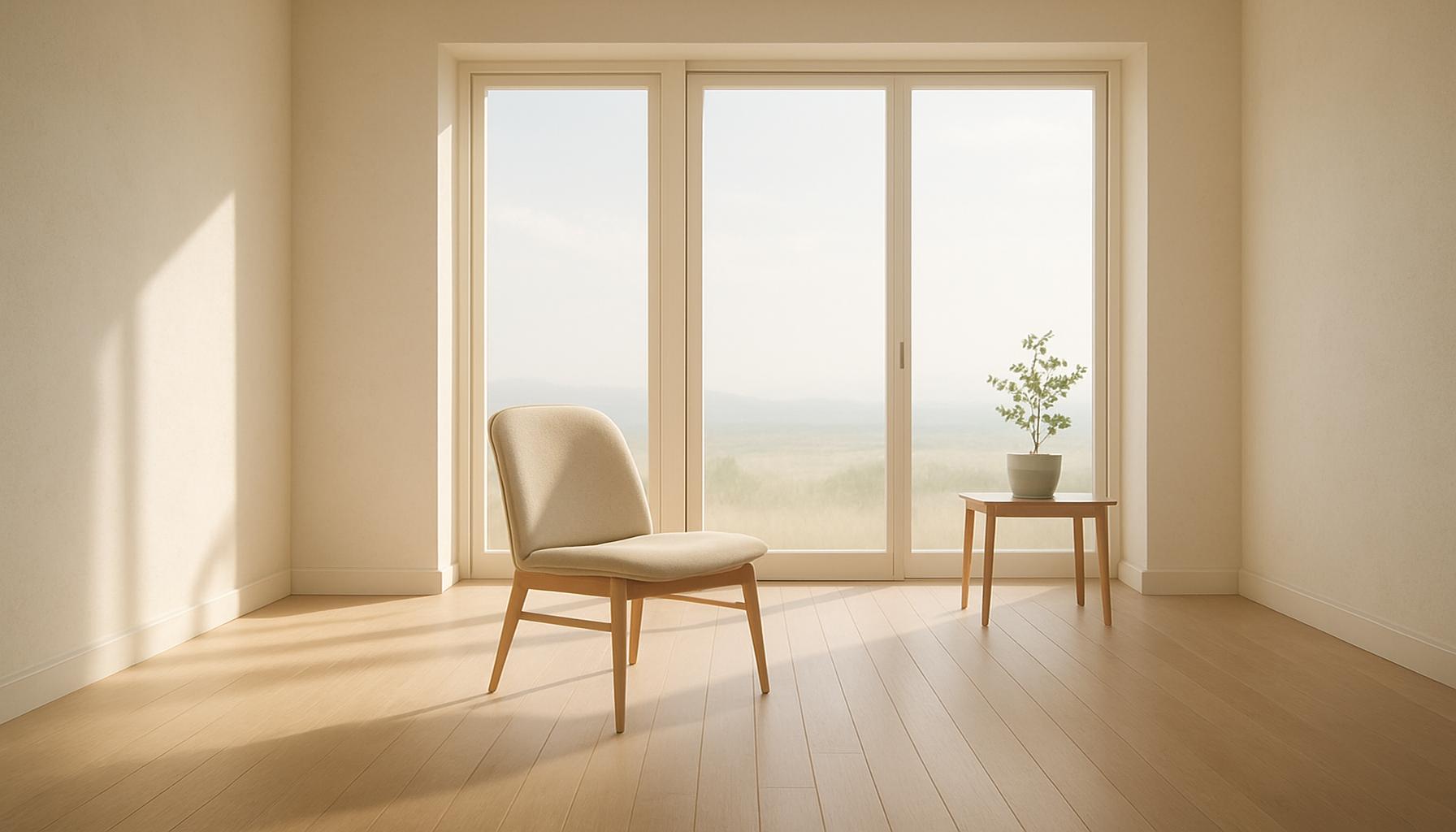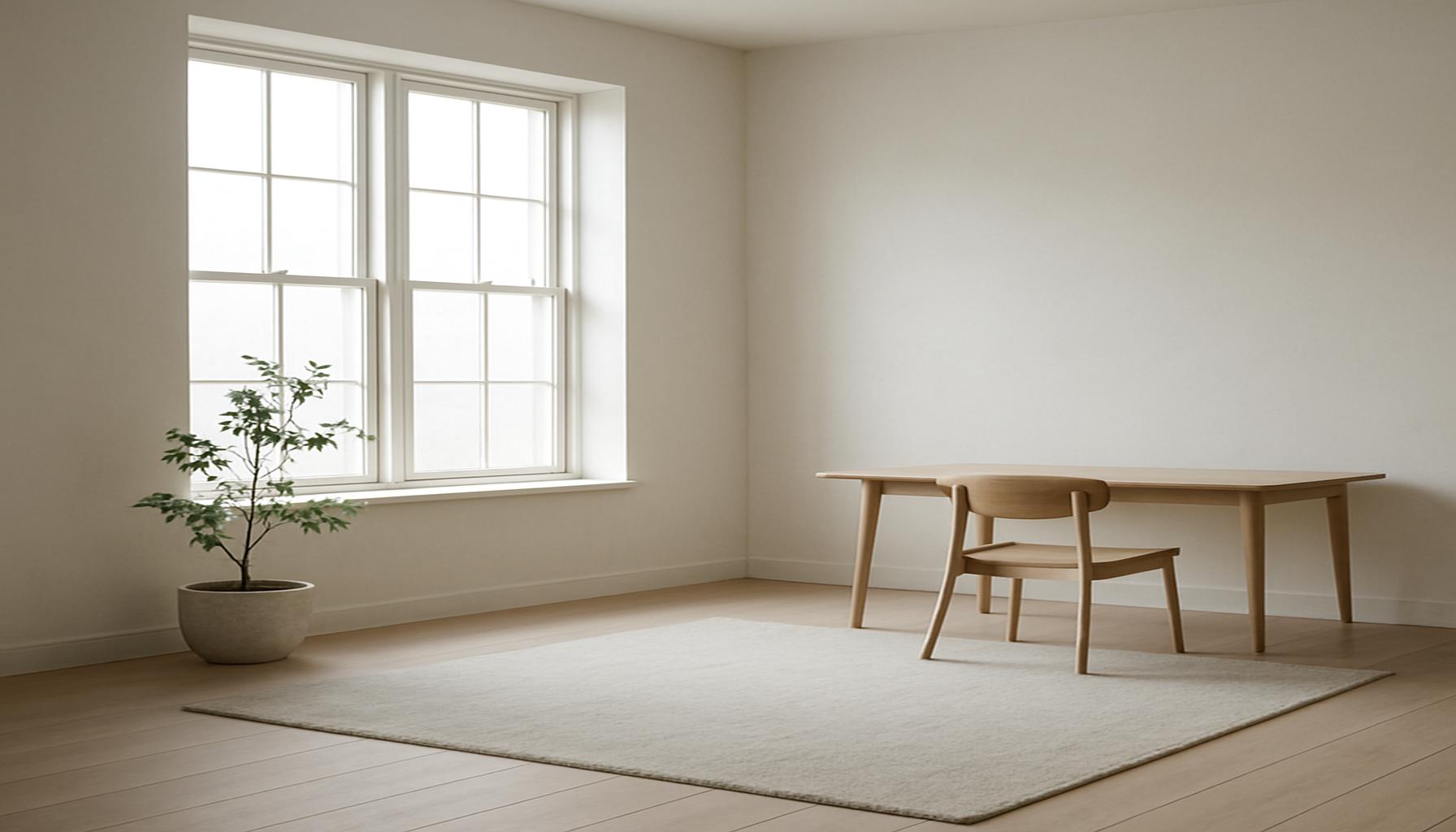Creative Freedom Through Minimalism: How Less Can Drive More Ideas
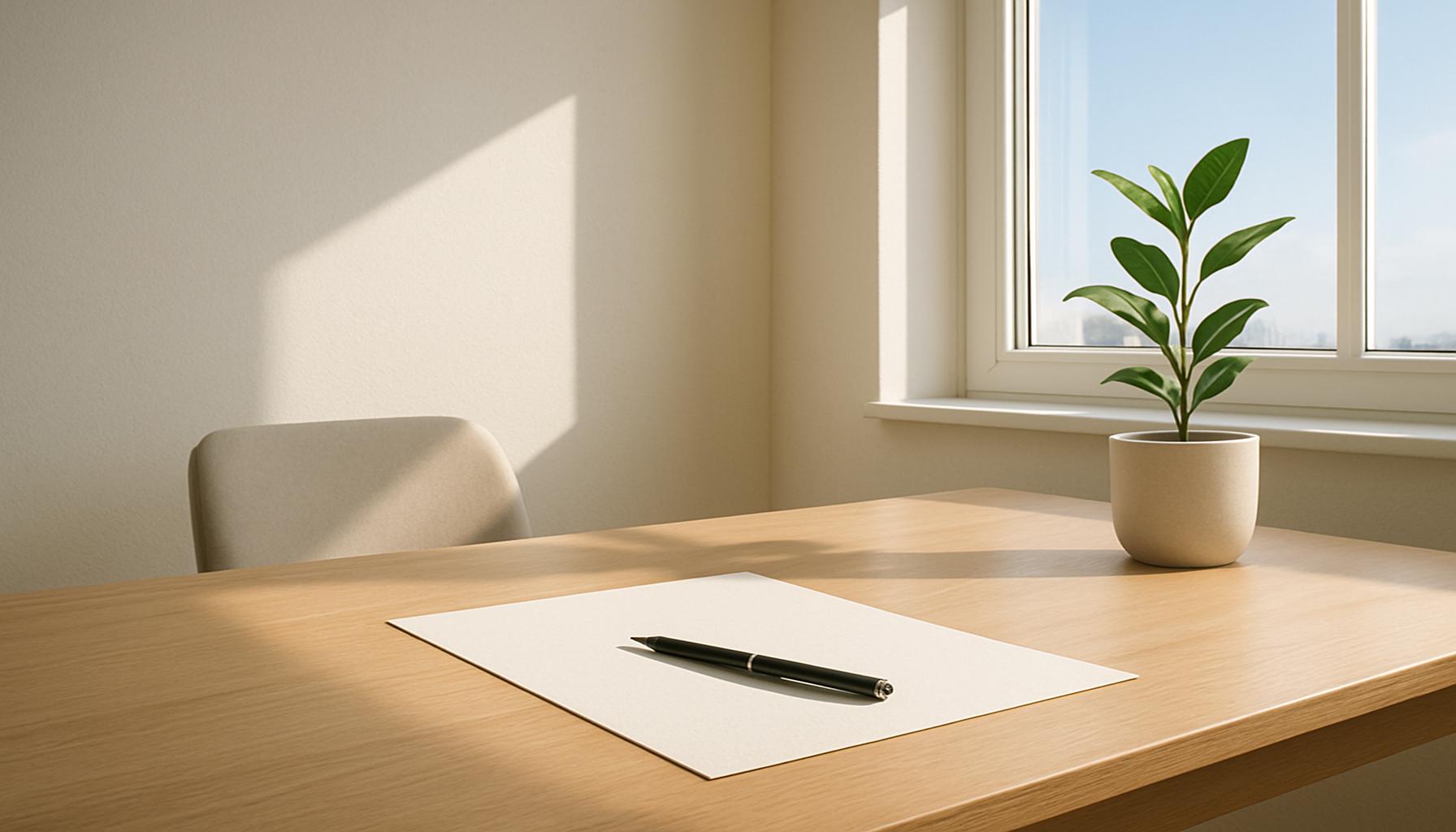
Unlocking Creativity Through Simplicity
In a world overflowing with distractions, embracing minimalism can unlock creative freedom. The practice of simplifying our surroundings can lead to a wealth of innovative ideas, proving that sometimes, less truly is more. By stripping away the unnecessary, we create space for the mind to breathe and the imagination to flourish.
The Power of Less
Minimalism isn’t just a trend; it’s a transformative approach with tangible benefits. Consider how a simplified environment can:
- Reduce mental clutter, allowing for clearer thinking. Psychologists suggest that a cluttered space can lead to a cluttered mind. When you eliminate the excess, your brain has fewer stimuli to process, leading to improved focus and creativity.
- Foster deeper concentration on creative work. A minimalist workspace, with only essential tools within reach, allows creatives to immerse themselves in their projects fully. This concept is often celebrated by innovators in various fields, from tech to art.
- Encourage exploration of new ideas without overwhelming external inputs. When you limit distractions, you open your mind to new thoughts and concepts that might have previously been drowned out by noise.
Statistics reveal that many renowned creators have embraced minimalist philosophies. For instance, authors like Ernest Hemingway and Ray Bradbury practiced minimalism in their writing spaces. Hemingway famously believed in the power of simple sentences and clear thoughts; his writing desk often consisted of just a typewriter and a few essentials. Similarly, Bradbury’s focus on a distraction-free environment helped him produce seminal works in science fiction.
Exploring the Minimalist Mindset
Minimalism fosters a unique mindset where creativity can thrive. It challenges us to focus on just a few important elements, such as:
- Quality over quantity. This principle emphasizes that having fewer but better-quality items or experiences can improve satisfaction and inspire creativity.
- Intentionality in choices. Every item in a minimalist’s space is there for a reason. This intentional selection encourages personal reflection and can lead to a deeper connection to one’s creative process.
- Curated experiences that inspire. A minimalist approach to life often involves choosing experiences that add value and spark joy, creating an environment rich with potential for creativity.
In this exploration of minimalism, we will delve into what it means to create intentionally and how adopting this philosophy can unleash your creative potential. By stripping away distractions, embracing simplicity encourages not only clarity and focus but also invites a greater appreciation for the beauty found in the minimalistic approach. Whether you are an artist, a writer, a designer, or simply someone looking to foster creativity in your everyday life, understanding and integrating minimalism can serve as a powerful catalyst for innovation.
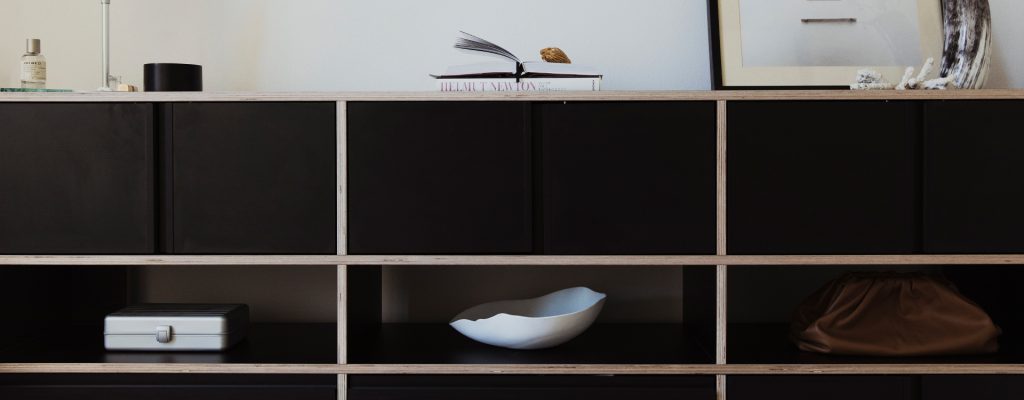
DIVE DEEPER: Click here to enhance your productivity
Embracing Minimalism for Enhanced Creativity
The essence of minimalism goes beyond just a clean aesthetic; it presents a powerful framework to nurture creative freedom. As we navigate through modern life, characterized by constant notifications and information overload, minimalism stands out as a beacon that invites us to prioritize what truly matters. By whittling down our surroundings—both physical and mental—we create fertile ground for ideas to sprout, develop, and flourish.
Breaking Down Creative Barriers
One of the most significant barriers to creativity is often the overwhelming sensation of choice and abundance. When faced with too many options, individuals can experience decision fatigue, which can stifle creative impulses. Minimalism counteracts this by providing a simplified framework that encourages clarity and reduces stress. Here’s how:
- Streamlined Focus: With fewer items vying for attention, the mind can engage more deeply with its current task. Studies indicate that environments with minimal distractions can lead to increased productivity, allowing creative professionals to immerse themselves in their work instead of juggling competing interests.
- Enhanced Problem Solving: When surrounded by simplicity, the brain can perceive relationships between ideas more clearly. This clarity can lead to innovative solutions and breakthroughs in creative projects, as seen with professionals in the film and tech industries who advocate for minimalist workspaces to foster brainstorming.
- Boosted Motivation: A clean and curated environment can inspire motivation and energy. The act of decluttering empowers individuals to take charge of their space, reflecting a broader control over their creative outputs. The connection between physical and mental clarity is well documented, indicating that a tidy environment can lead to an inspired mind.
Famous figures in history often speak to the power of minimalism in bolstering their creativity. For instance, renowned artist Pablo Picasso once discarded unnecessary tools to focus solely on his paintbrush and canvas, honing in on his creative vision. Similarly, modern tech giants like Steve Jobs adopted minimalistic design principles both in their products and work environments, which paved the way for unprecedented innovation and creativity.
Mindfulness and Intentional Creation
At its core, minimalism invites a mindful approach to creation, encouraging individuals to reflect on what adds value in their lives. By adopting a minimalist perspective, it becomes easier to identify sources of inspiration and meaning, including:
- Meaningful Connections: Engaging with a select group of likeminded individuals can deepen creative discussions, leading to collaborative innovation without the noise of larger, less-focused groups.
- Selective Experiences: Instead of spreading oneself thin across numerous events or projects, minimalism encourages choosing fewer, yet more impactful experiences that align with one’s passions, enhancing creative growth.
- Change in Consumption Habits: Minimizing the intake of information—be it through social media or news—allows for a more concentrated effort in cultivating one’s inner dialogue and creativity.
In understanding minimalism, we recognize that it is not solely about reducing the quantity of things, but rather enhancing the quality of our experiences and creations. By welcoming a minimalist mindset, anyone—be it a creative professional or an everyday individual—can tap into the depths of their imagination, ultimately crafting a life rich with meaning and innovative ideas.
| Advantage | Description |
|---|---|
| Enhanced Focus | Minimalism reduces distractions, allowing for deeper concentration and creativity. |
| Freedom to Innovate | With fewer elements to consider, individuals can explore new ideas without the clutter of conventional expectations. |
| Cost-effective Solutions | Minimalism often leads to efficiency in budgeting and resource allocation, enabling investments in innovative projects. |
| Clarity of Purpose | A minimalistic approach can help define goals and objectives more clearly, fostering a stronger driving force behind creative endeavors. |
The essence of embracing minimalism transcends aesthetic appeal and dives deeply into enhancing workflow and creativity. Adopting a minimalist lifestyle is not merely about reducing possessions; it serves to streamline processes and amplify ideas. When individuals declutter their physical spaces, they also create mental spaces conducive to innovative thought. The alignment of focus and purpose often leads to breakthrough ideas, illustrating that sometimes, less truly means more. In a culture inundated with excess, the choice to simplify can spark a wave of creativity that invites exploration and discovery. By prioritizing what truly matters, we cultivate an environment ripe for ideation and growth. Through this lens, minimalism becomes not just an aesthetic but a profound philosophy that champions creativity and innovation.
DISCOVER MORE: Click here for effective strategies
The Role of Minimalism in Idea Generation
As we delve deeper into the principles of minimalism, it becomes apparent that this ideology can serve as a catalyst for idea generation. By distilling experiences to their essence, individuals enable themselves to access a reservoir of creativity that might otherwise remain untapped. This process is not merely about eliminating distraction; it’s about rethinking how we perceive and interact with the world around us.
Creating Space for Inspiration
The notion of “empty space” is often undervalued, yet it can be a person’s greatest ally in fostering creativity. Minimalism, by its very nature, champions this idea. Empty space—be it physical, mental, or temporal—allows for thoughts to flow and develop without the weight of unnecessary clutter. This principle can manifest in various ways:
- Physical Space: Spaces designed with minimalism encourage physical movements that engage the mind and body. For instance, a simple studio setup for artists can encourage experimentation, free from the distractions of overwhelming materials.
- Mental Space: Practicing mindfulness can aid in creating mental space. This involves moments of stillness—whether through meditation or contemplative walks—wherein minds are free to wander and spontaneously generate ideas untainted by external pressures.
- Time Efficiency: By allocating specific times for creative pursuits in a clutter-free schedule, individuals are more likely to find themselves in a state of flow. This organized structure invites exploration and innovation while minimizing the anxiety associated with multitasking.
Research supports this idea; a study conducted by the American Psychological Association highlights that structured environments can facilitate cognitive flexibility, which is essential for creative thought. When the physical environment supports a minimalist approach, the brain’s ability to form new connections and regress to familiar ones becomes enhanced, creating pathways for unique ideas to develop.
Successful Minimalist Creatives
There exists a multitude of examples where minimalism has played a significant role in creative success across diverse industries. Consider the tech world, where companies like Airbnb and Dropbox utilize minimalist designs not only in their user interfaces but also in their corporate cultures. By fostering environments that prioritize essential ideas, these tech innovations result in user experiences that are clean and focused, paving the way for more engaging content and efficient workflows.
In the realm of literature, authors like Ernest Hemingway exemplified minimalist writing through their straightforward, unadorned prose. This approach stripped away any excess, allowing for raw emotion and ideas to shine through. Hemingway’s famed “Iceberg Theory” suggests that deeper meaning lies beneath the surface of simple language, showing how a minimalist mindset can evoke powerful responses in readers.
The Long-term Benefits of Minimalist Practices
Beyond immediate creative outcomes, embracing minimalism can yield long-term benefits in one’s personal and professional life. For example, reflecting on one’s personal values often leads to a more authentic creative expression, aligning one’s work with their passions and principles. This alignment often results in:
- Increased Resilience: A minimalist lifestyle encourages adaptability and resilience, vital traits for navigating creative challenges.
- Sustainable Creativity: By prioritizing fewer, more meaningful creative ventures, individuals may find greater satisfaction and fulfillment in their work, thus sustaining their creative energy over time.
- Stronger Personal Brand: Ultimately, a clear and focused approach to creativity can help individuals establish a stronger personal brand, cementing their presence in crowded industries.
As highlighted, the intersection of minimalism and creativity offers a profound opportunity for growth and exploration. Harnessing the power of less, individuals can unlock a universe of possibilities, driving more innovative ideas and profound creative expressions. In a world inundated with distractions, embracing minimalism may just be the key to unleashing true creative freedom.
DISCOVER MORE: Click here to learn about mental clarity in minimalism
Conclusion
In essence, embracing a minimalist approach reveals an untapped potential for creative freedom, enabling individuals to generate profound ideas by focusing on what truly matters. As we navigate through a world saturated with excess, it is becoming increasingly clear that less is indeed more. By creating physical, mental, and temporal space, we allow our thoughts to flourish uninhibited by the chaos that typically surrounds us.
Whether through the simplified aesthetics of tech companies like Airbnb and Dropbox, or the literary prowess of writers like Ernest Hemingway, the richness of creativity thrives in environments that prioritize clarity over clutter. These examples highlight how the minimalist philosophy not only enhances individual creativity but also cultivates a stronger personal brand and authentic expression.
Moreover, the long-term benefits of a minimalist lifestyle—such as increased resilience, sustainable creative practices, and enhanced cognitive flexibility—further reinforce the argument that adopting minimalism is a strategic approach to creativity. For anyone feeling overwhelmed by the demands of modern life, considering a shift towards minimalism could be transformative.
In conclusion, the journey to creative freedom through minimalism isn’t merely about reducing the number of distractions but about redefining what inspires and drives us. By embracing simplicity, we can unlock a wide array of innovative ideas, allowing creativity to thrive like never before. Now is the time to explore the endless possibilities that emerge from the power of less.
